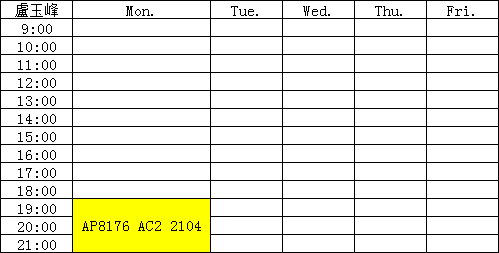User:Yufenglu
From Computational Biophysics and Materials Science Group
Contents
[hide]Introduction
Yufeng Lu recently joined the Department of Physics and Materials Science as a Ph.D. student. Lu is supervised by Dr. Jun Fan from City University of Hong Kong. He finished his master's thesis under the supervising of Prof. Dachun Yang in Beijing Normal University and received his Master's degree in School of Mathematical Sciences from Beijing Normal University in 2014.
Education Experience
| City University of Hong Kong, Hong Kong, China | 2014 - | Ph.D., Department of Physics and Materials Science |
| Beijing Normal University, Beijing, China | 2011 - 2014 | Master, School of Mathematical Sciences |
| Beijing Normal University, Beijing, China | 2007 - 2011 | Bachelor, School of Mathematical Sciences |
Progress page
Basic knowledge and skill required to finish Ph.D. degree
* Basic Knowledge
1. Theoretical Mechanics.
Lagrange mechanics, and Hamiltonian mechanics.
2. Spin Lattice Dynamics
A. Basic Knowledge about atomistic simulations
Density function theory
Molecular Dynamics simulation
Monte Carlo simulation
Phase field model
Get to know the fundamental algorithm about the above methods, and tell the relation of them.
B. Learn Detail of molecular dynamics
a. Write a basic flow chat of MD
b. Interatomic potentials used, like Lennard-Jones, EAM. Learn to generate a potential table.
c. How to integrate the equation of motion. velocity-verlet, leap-frog, and so on.
d. Thermostat. rescaling; Breathing; Nose-Hoover; Langevin
e. Barostat. extended method; constaint method.
C. Calculation of basic thermodynamic quantities from MD
a. Energy; volume; heat capacity
b. Virial Pressure (or stress)
c. Time correlation function
d. Histogram
3. C++ programming
A. Basic instruction simple arithmetic expression; B. class (or structure), array and pointer D. Pre-assembly, or Macro assembly C. parallel programming: OpenMP, CUDA
4. Solid-State theory
A. Stucture of Solid Matter
Crystal lattice; Reciprocal space; Defect in Solid;
Brillouin Zones;
B. Atomic vibtrations in solid
Simple harmonic Potential; single-atomic or disatomic linear atom chain;
phonon; density of state; dispersion relation;
Thermal energy, heat capacity of harmoinc solid
Effects due to anharmonicity: thermal expansion, heat conduction
C. Electrons in solids
Inifinte square-well potential
Fermi statistics
Heat capacity of electrons in solids
Band-structure
Tight-binding approximation
Density of states
D. Elastic properties.
Strain-stress relation
5. Other related background
A. Quantum mechanics
a. Schordinger picture
b. Heisenberg picture
c. Path integration picture
d. Spin operator
B. Statistcal thermodynamics
a. ensemble theory; Boltzmann most probability theory.
b. 0th, 1st, 2nd thermodynamic law
d. thermodynamic function, Maxwell relation.
c. fluctuation theory
d. transition theory
C. Electrodynamics
Maxwell equations
Green function
D. Mathematical method
a. Fast Fourier transform
b. numerical method in solving ordinary differential equations; finite differential method
c. Gaussian integration;
d. Residue theorem
d. optimization method: steepest descent method; conjugated gradient method; Nudge elastic band;
* Software
1. Word processing: Micro-office 2. Data processing; Origin; Matlab; 3. Visualized: Origin; Matlab; Atomeye; gnuplot; 4. Bash script in Linux.
Class schedule
Contact
| Office: | AC1 - G1417 |
| Email: | yufenglu3-c@my.cityu.edu.hk |
| Tel: | +(852)-51059663 |
